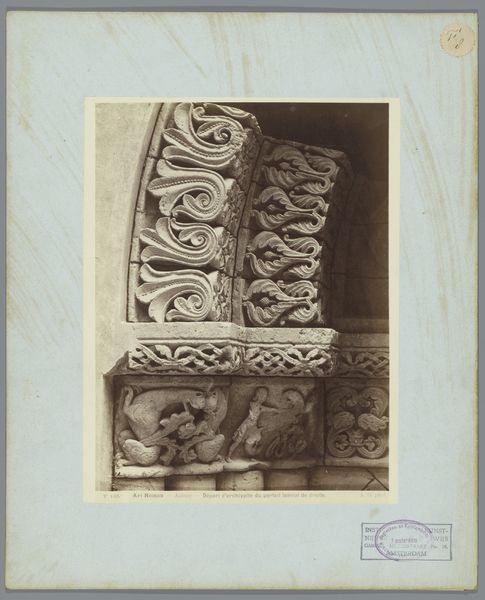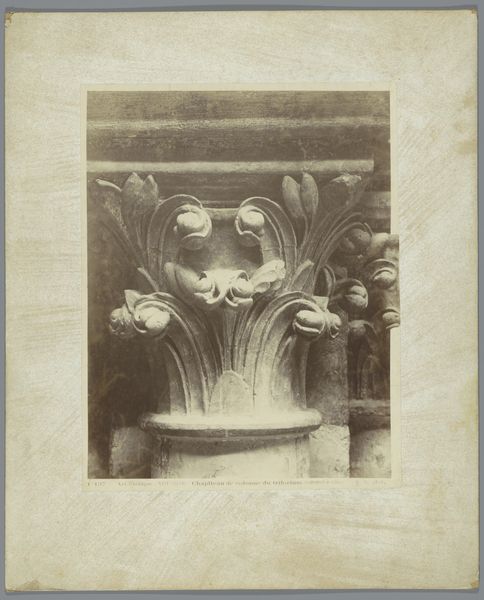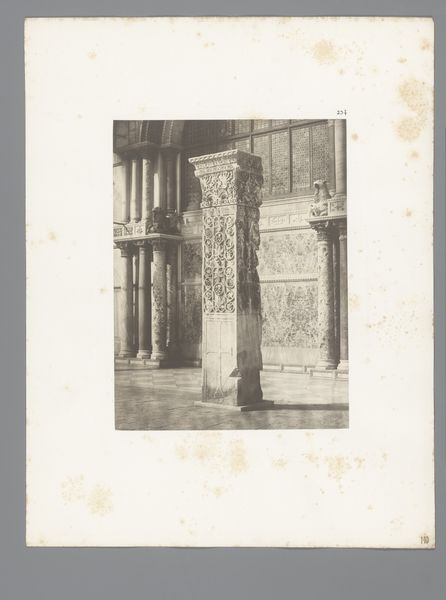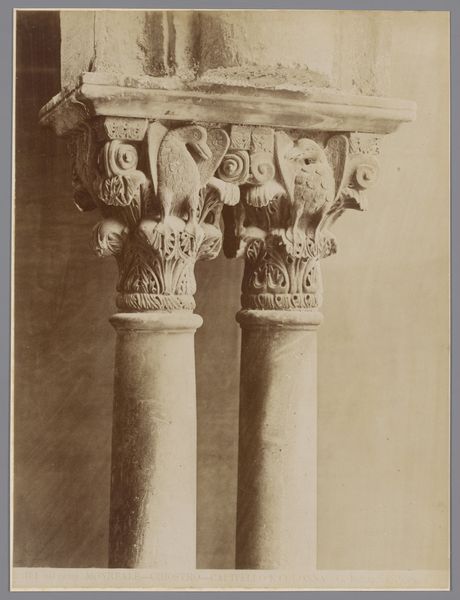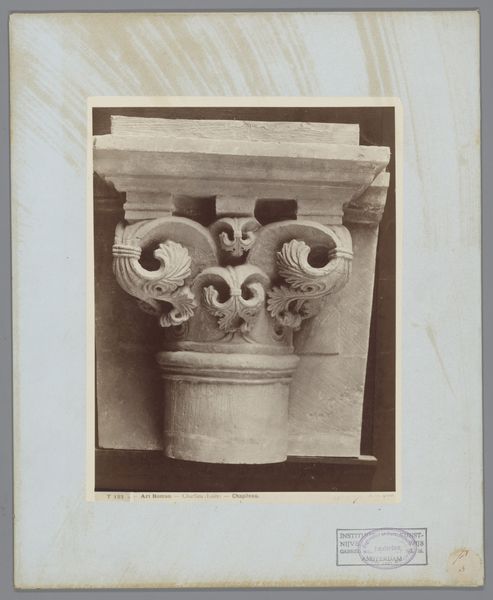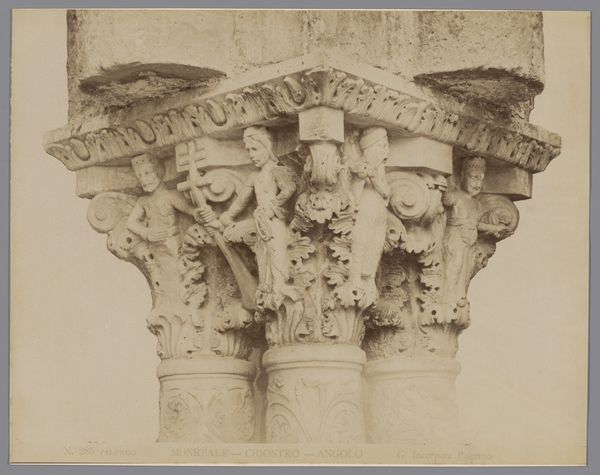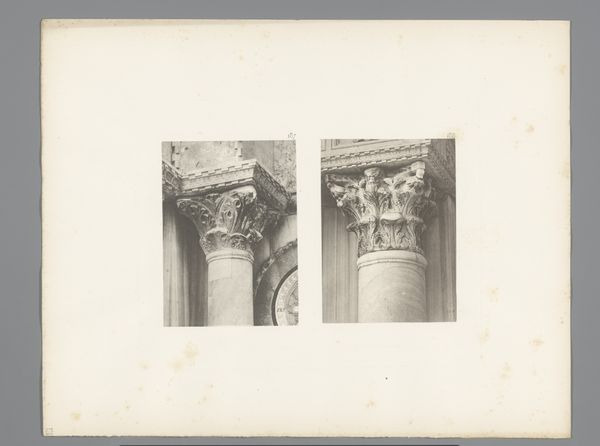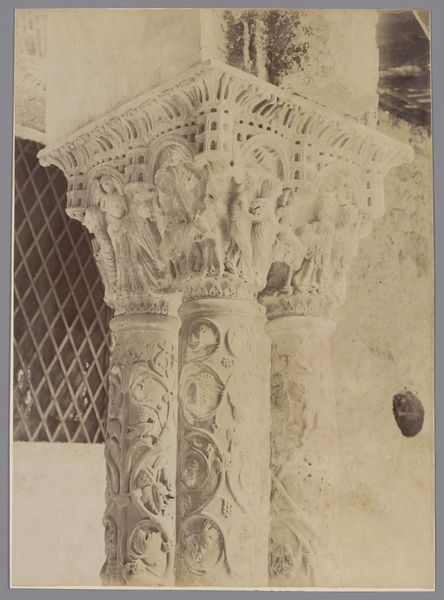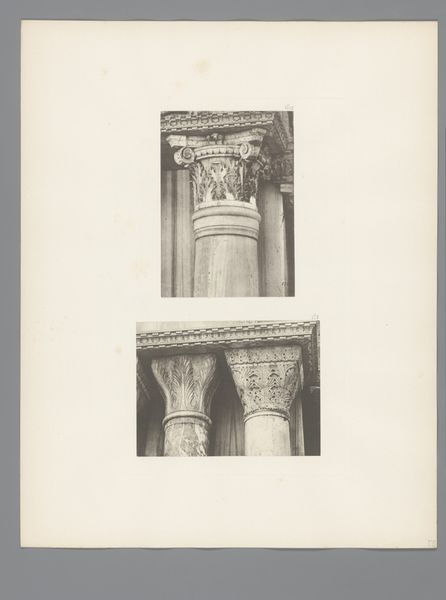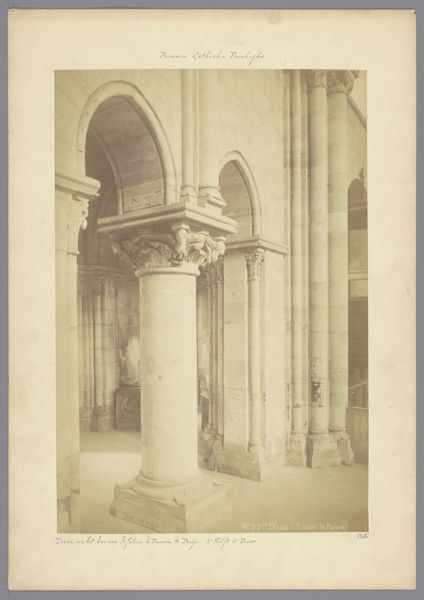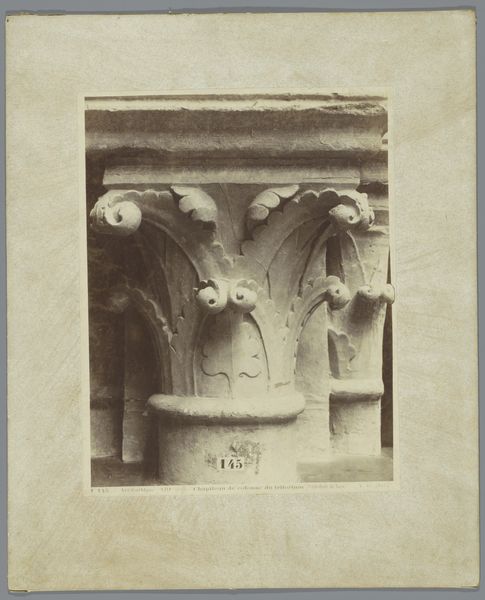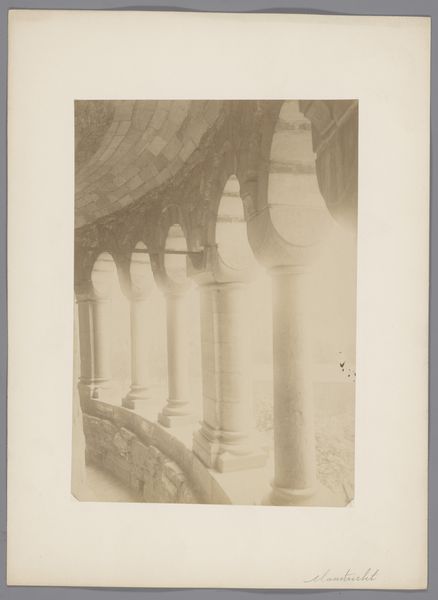
Twee afgietsels van kapitelen van de Saint-Pierre te Caen c. 1875 - 1900
0:00
0:00
Dimensions: height 261 mm, width 204 mm
Copyright: Rijks Museum: Open Domain
Editor: This photograph, “Twee afgietsels van kapitelen van de Saint-Pierre te Caen,” was taken sometime between 1875 and 1900 by Adolphe Giraudon. It shows two casts of architectural details. They look so fragile in this light, despite being stone. How do you interpret this work? Curator: I see this photograph as participating in a larger cultural project of the late 19th century, which sought to document and preserve medieval architectural heritage. But who had access to this heritage and how was it presented? Was it used to bolster national identities, perhaps even justifying colonial projects by associating them with a romanticized past? Editor: That's interesting. I hadn't thought about it in terms of national identity. I was just thinking about the details and craftsmanship. Curator: The detail is crucial, yes. Think about the labor involved in creating these capitals originally and the skill required to replicate them accurately. Consider also who was allowed to create such craftsmanship in medieval times. Were these skills restricted by gender or social status, and are those same gatekeepers in play here, determining whose work and skill is being replicated in photographs? Editor: So you're saying the photograph not only preserves the past, but also reflects the power structures of both the past and the time it was created? Curator: Precisely. It invites us to examine the socio-political context that dictated the production and the reception of such architectural marvels, and question how our understanding is shaped through photography and display. It encourages a critical look at who gets to tell these stories and whose voices are left out. Editor: I never would have considered the power dynamics involved just looking at what seems to be a simple photograph of old architectural fragments. I have a lot to think about. Curator: Indeed! Let's keep asking these questions. Art history shouldn't shy away from discomfort, it should encourage critical dialogues about the past and present.
Comments
No comments
Be the first to comment and join the conversation on the ultimate creative platform.
